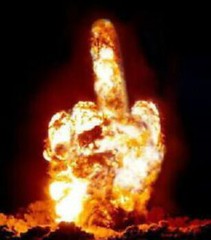Crossposted from The Stars Hollow Gazette
 A Profile in Fracking: How One Tiny Hamlet Could Be Devastated by Gas
A Profile in Fracking: How One Tiny Hamlet Could Be Devastated by Gas
By Molly Oswaks, The Atlantic
Dec 7 2011, 10:02 AM ET
Hancock is home to four bait-and-tackle shops, three beauty salons, six churches, ever more vacant and dilapidated-looking homes, one video rental thrift store hyphenate, and one funeral parlor. The stateliest establishment in this otherwise decidedly unstately community is the Hancock House Hotel; here you will find Honest Eddie’s Tap Room, a dimly lighted wood-paneled bar named for the major league baseball player John Edward “Honest Eddie” Murphy, who was born in Hancock in 1891. The food menu at Honest Eddie’s includes items like “They’re Smothered!” (thick-cut fries blanketed in a melty cheese sauce) and “The Deep-fried Pickle” (which is exactly what it sounds like). There is also an off-menu rice pudding, which they serve in a tall bevelled glass sundae cup and garnish with a dollop of whipped cream. The pudding has no spice.
…
Here, some 9,000 feet below traversable ground, lies a particularly profitable piece of the Marcellus Shale, a 400-million year old formation of marine sedimentary rock rich with reserves of untapped natural gas. Shale gas reserves are extracted by means of a multi-step process called hydraulic fracturing, or fracking. Chemical fracking fluid is pumped into a targeted borehole drilled deep into the ground; sand is then introduced into the fluid to maintain the integrity of the fracture. The pressure and depth at which this is executed produces a subterranean climate porous and permeable enough for shale gas to be recovered profitably: this is a “frack job.”
For a cash-strapped community like Hancock, fracking would seem a high-yield stimulus plan millennia in the making: there is, of course, the economic appeal of home-sourced natural gas, but there are also land royalties to be reaped by residents and money to be made from all the supplies and sandwiches sold in town to the fracking crew itself. Not to mention jobs.
…
It’s difficult to predict whether Hancock’s soil and water will, in fact, be poisoned once the drilling begins. Various assessments of the environmental impact of fracking have been conducted, at both state and national levels. The second-hand damage is much easier to forecast.
The roads and highways that run through town will experience a significant surge in traffic, with large trucks and heavy machinery traveling to and from the drill sites, and all the accompanying noise pollution. The bucolic natural landscape, which has long drawn lucrative hunting and camping tourism at peak season, will be cut up and and cordoned off for pipes and drills and gas collection.
It’s a paradox: The town needs money to survive, but the money being offered comes at the expense of the town itself. It would seem, then, however ironic, that capitalism is killing the company town.
Actually, it’s not at all difficult to predict that “Hancock’s soil and water will, in fact, be poisoned once the drilling begins.”
 My daughter is the bread baker but Sugarplum Bread is the one I enjoy making, too. This sweet bread studded with candied fruit is not as heavy as fruit cake. It is topped with a white icing glaze and decorated with red and green cherries to look like clusters of berries. It is a treat for breakfast or in the afternoon with tea. I make small ones baked in large muffin tins, decorated and wrapped in colored plastic wrap tied with ribbon as gifts for guests.
My daughter is the bread baker but Sugarplum Bread is the one I enjoy making, too. This sweet bread studded with candied fruit is not as heavy as fruit cake. It is topped with a white icing glaze and decorated with red and green cherries to look like clusters of berries. It is a treat for breakfast or in the afternoon with tea. I make small ones baked in large muffin tins, decorated and wrapped in colored plastic wrap tied with ribbon as gifts for guests.
 On this day in 1642,
On this day in 1642,  New Zealand is one of the most recently settled major landmasses. The first known settlers were Eastern Polynesians who, according to most researchers, arrived by canoe in about AD 1250-1300. Some researchers have suggested an earlier wave of arrivals dating to as early as AD 50-150; these people then either died out or left the islands. Over the following centuries these settlers developed into a distinct culture now known as Maori. The population was divided into iwi (tribes) and hapu (subtribes) which would cooperate, compete and sometimes fight with each other. At some point a group of Maori migrated to the Chatham Islands where they developed their distinct Moriori culture.
New Zealand is one of the most recently settled major landmasses. The first known settlers were Eastern Polynesians who, according to most researchers, arrived by canoe in about AD 1250-1300. Some researchers have suggested an earlier wave of arrivals dating to as early as AD 50-150; these people then either died out or left the islands. Over the following centuries these settlers developed into a distinct culture now known as Maori. The population was divided into iwi (tribes) and hapu (subtribes) which would cooperate, compete and sometimes fight with each other. At some point a group of Maori migrated to the Chatham Islands where they developed their distinct Moriori culture.



